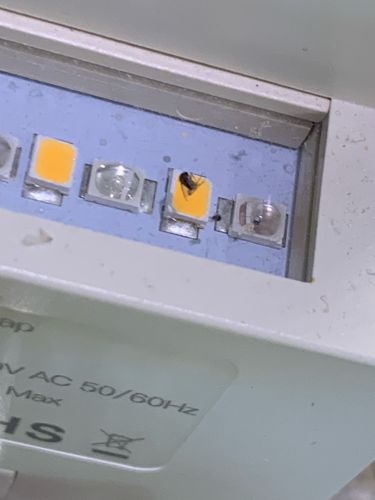Fruit Fly (or similar small fly)
Scientific Name: Drosophila melanogaster (most common fruit fly species, though exact species cannot be determined from image)
Order & Family: Diptera, Drosophilidae
Size: 2-4 mm (0.08-0.16 inches)

Natural Habitat
Commonly found in homes, kitchens, and agricultural areas where decaying or fermenting fruit and vegetables are present.
Diet & Feeding
Feeds on decaying fruit, vegetables, fungi, and other organic matter. Larvae develop in these same substrates.
Behavior Patterns
Attracted to fermenting substances, especially fruit, vinegar, and alcoholic beverages. They have a short life cycle (about 2 weeks) and reproduce rapidly. Often seen flying in small swarms or resting on surfaces near food sources. They are known to be attracted to light sources, which is likely why it's on the LED.
Risks & Benefits
Risks: Can be a nuisance pest in homes and food establishments, potentially contaminating food with bacteria or yeast from their bodies or if they lay eggs on food. Benefits: Widely used in scientific research, particularly genetics and developmental biology, due to their short life cycle, ease of breeding, and well-mapped genome. In nature, they contribute to decomposition processes.
Identified on: 9/20/2025